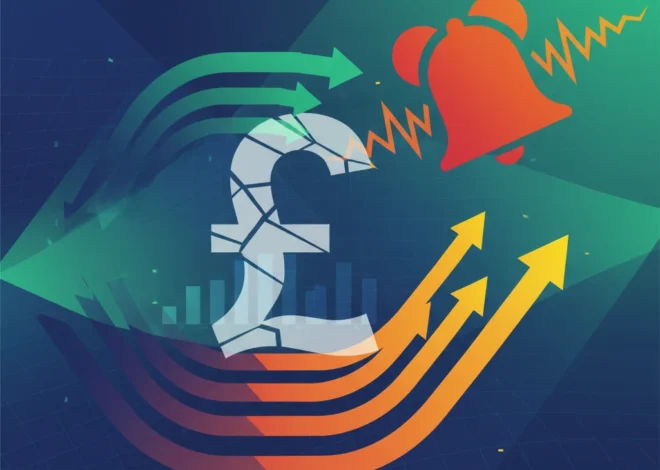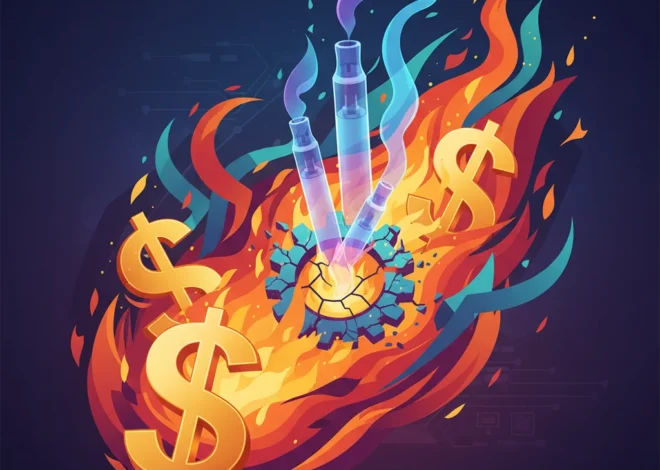
Echoes of 2008? Why Wall Street’s Titans Are Sounding the Alarm on a New Debt Crisis
In the intricate world of high finance, certain warnings carry more weight than others. When the leaders of institutions managing trillions of dollars begin to speak in unison about growing risks, it pays to listen. Recently, a chorus of concern has emerged from the very top of the US financial system, with a stark message: lending standards are eroding, and a “willingness to cut corners” is creeping back into the market. This isn’t just abstract financial jargon; it’s a potential harbinger of economic turbulence that could impact everything from the stock market to your personal finances.
Leading this charge is Marc Rowan, the chief executive of Apollo Global Management, one of the world’s largest alternative asset managers. At a recent conference, he cautioned that the intense competition in the lending market is leading to dangerous habits. His warning about an increasing “willingness to cut corners” serves as a potent reminder of the cyclical nature of risk and reward in the world of finance. When capital is abundant and the pressure to deploy it is high, the foundational principles of prudent lending can begin to fray.
This post will delve into these warnings, explore the seismic shift from traditional banking to private credit, and analyze what this new landscape means for investors, business leaders, and the broader economy. Are we witnessing the early tremors of the next financial crisis, or is this a different kind of risk altogether?
The New Financial Frontier: Understanding the Rise of Private Credit
To understand today’s warnings, we must first understand where the risk now lives. In the aftermath of the 2008 financial crisis, sweeping regulations like the Dodd-Frank Act were designed to make traditional banks safer. They succeeded, in a way, by forcing banks to hold more capital and take on less risk. However, the demand for credit from businesses didn’t disappear. Instead, it migrated.
This migration fueled the explosive growth of “private credit” – a sector where non-bank institutions like asset managers, private equity firms, and specialized credit funds lend directly to companies. This market has ballooned into a multi-trillion dollar force in the global economy. For businesses, it offers a faster, more flexible alternative to the often-bureaucratic process of securing a bank loan. For investors, it offers the potential for higher yields in a world of fluctuating interest rates.
However, this new frontier of finance operates in the shadows of the highly regulated public banking system. It’s more opaque, less standardized, and subject to far less regulatory oversight. This is the very arena where titans like Marc Rowan are now seeing the red flags.
To clarify the distinction, here is a comparison between traditional bank lending and the world of private credit:
| Feature | Traditional Bank Lending | Private Credit |
|---|---|---|
| Primary Lenders | Commercial and investment banks | Asset managers, private equity firms, credit funds |
| Regulatory Oversight | High (e.g., Dodd-Frank, Basel III) | Low to moderate; less direct oversight |
| Transparency | Relatively high; publicly reported data | Low; privately negotiated terms |
| Loan Covenants | Typically strong, with strict protections for lenders | Often “covenant-lite,” offering more flexibility to borrowers |
| Speed & Flexibility | Slower, more bureaucratic process | Faster, more customizable loan structures |
| Risk Holders | Banks (and ultimately, taxpayers via deposit insurance) | Institutional investors (pension funds, insurers, endowments) |
Déjà Vu? The Alarming Parallels (and Key Differences) to 2008
Rowan’s warnings inevitably evoke memories of the period preceding the 2008 global financial crisis. The language is eerily similar: loosening standards, excessive risk-taking, and a relentless chase for yield. A key concern is the proliferation of “covenant-lite” loans, which lack the traditional financial guardrails that protect lenders if a borrower’s financial health deteriorates. This trend, noted by top financiers, means that by the time a company is in visible trouble, lenders may have fewer options and face greater losses.
However, it’s crucial to recognize the differences. David Solomon, CEO of Goldman Sachs, has pointed out that the system today is fundamentally safer than it was in 2008. The largest banks are much better capitalized and less leveraged. The risk hasn’t vanished; it has been transferred. Instead of being concentrated on the balance sheets of systemically important banks, it now resides with a diverse group of institutional investors, including pension funds, insurance companies, and university endowments.
This shift creates a new, less understood dynamic. A crisis in the private credit market might not trigger a taxpayer-funded bank bailout, but it could decimate the retirement savings and investment portfolios of millions, creating a different kind of systemic shock to the economy.
The Ripple Effect: What Weakening Standards Mean for the Broader Economy
The concerns raised by Wall Street leaders are not confined to the towers of Manhattan. The health of the lending market has profound implications for everyone.
- For Investors: In the world of investing, higher yield always corresponds with higher risk. The attractive returns offered by private credit funds may be masking underlying vulnerabilities. A market correction could lead to significant losses in portfolios that are heavily allocated to these assets. This could also have a chilling effect on the stock market as investors flee from risk.
- For Business Leaders: While easy credit can feel like a boon, allowing for rapid expansion and acquisitions, it can also be a trap. Companies that take on too much debt with weak covenants may find themselves dangerously exposed during an economic downturn, facing a solvency crisis with little room to maneuver.
- For the Economy: Corporate debt is a cornerstone of modern economics. A wave of defaults in the private credit market could trigger a credit crunch, making it harder for even healthy companies to get the capital they need to grow and hire. This could lead to job losses, reduced business investment, and a potential recession. The interconnectedness of our financial system means that a fire in the private markets can easily spread. The sheer scale of this market ensures its impact would be felt economy-wide.
Navigating the Future: The Role of Technology and Regulation
The evolution of finance is relentless, driven by both market forces and technological innovation. The field of fintech is playing a dual role in this story. On one hand, sophisticated financial technology allows for more efficient capital allocation and risk modeling. On the other, it can create a false sense of security, where algorithms optimize for speed and volume over fundamental credit analysis.
The potential for blockchain technology to bring transparency to these opaque markets is often discussed, though its practical implementation remains a distant prospect. For now, the key question revolves around regulation. Will regulators, who have spent the last 15 years fortifying the banking system, now turn their attention to the burgeoning private credit market?
Regulating this diffuse network of funds and asset managers is far more complex than overseeing a handful of major banks. Any heavy-handed intervention could stifle a vital source of capital for the economy. Yet, doing nothing leaves the system exposed to the very “irrational exuberance” that has preceded past downturns.
A Time for Vigilance
The warnings from Marc Rowan and his peers are not a prediction of imminent doom, but a call for vigilance. They are a reminder that the fundamentals of finance and economics do not change, even as the players and platforms evolve. The relentless pursuit of returns, the competitive pressure to deploy capital, and the human tendency to become complacent during periods of calm are timeless forces.
The financial system may be structured differently than in 2008, but the underlying risks of loose credit and excessive leverage are re-emerging in a new guise. For investors, policymakers, and business leaders, the message is clear: the corners being cut today could lead to a cliff tomorrow. Prudence, rigorous due diligence, and a healthy skepticism of easy money are the best defenses against the inevitable turning of the credit cycle.


